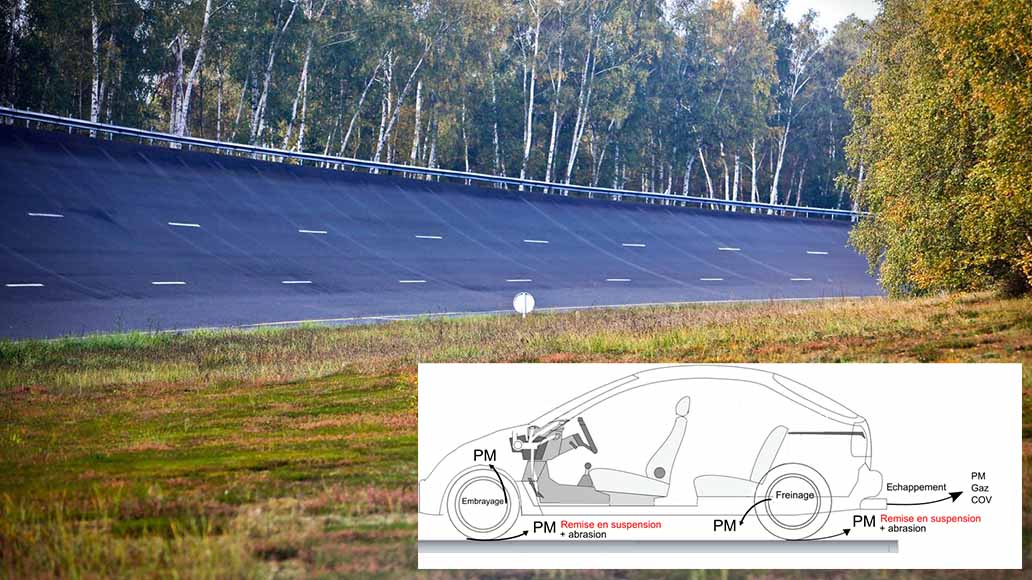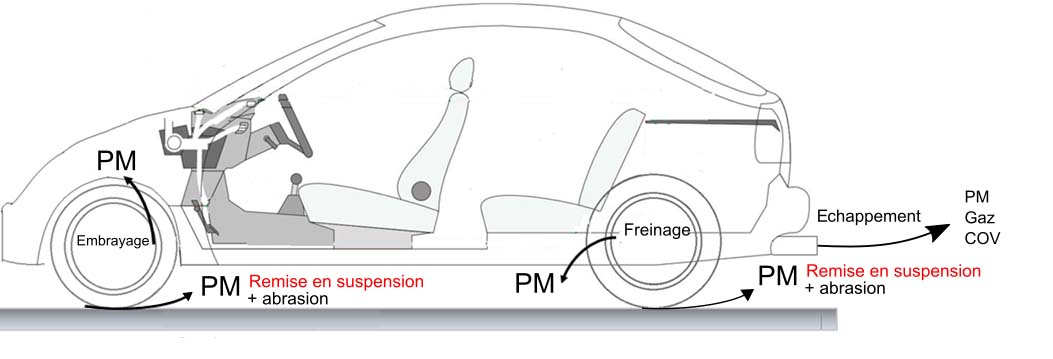Helping fight road transport pollution by analyzing suspended particles on the roads

The ESTACA’LAB research center has received support from the Agence De l’Environnement et de la Maitrise de l’Energie (ADEME) for the CEPARER project (Characterization of Particulate Emissions thrown up by Road Vehicles). The project aims to better understand particles resulting from tire, clutch, and brake wear or from road wear of , deposited on the road and when resuspended by vehicles become a major source of pollution. This project is led by the QUAD (QUalité de l’Air et Dépollution) research team at ESTACA with support from the Energy and Control team, in partnership with AIRPARIF and UTAC. It will be conducted over 3 years from 2022 to 2025.
An ESTACA researcher project to characterize emissions of particles stirred up by moving vehicles
Outdoor air pollution is the 4th leading cause of death worldwide according to WHO and since 2013, outdoor air particles have been classified as carcinogenic to humans by the International Agency for Research on Cancer (IARC). A significant amount of pollution comes from vehicle exhaust emissions, but also from other lesser-known non-exhaust sources, such as tire, clutch and brake wear, as well as road wear. The particles are deposited on the road and then resuspended when vehicles pass by. 60% of the particles found in air pollution come from these emissions.
The CEPARER project, which has just been approved by ADEME as part of the AQACIA 2020 program on indoor and outdoor air quality issues, will enable ESTACA’s teacher-researchers to study the emissions of particles that are resuspended when vehicles are driven on the road network.
The first objective is to characterize the emission modes and the factors causing the resuspension of these particles. The second is to offer recommendations to reduce resuspension and limit outdoor air pollution from road transport.

Track and test bench measurements
The CEPARER project will include two studies, one experiment on a track and the other on a test bench in the ESTACA laboratory.
The first experiment will conduct measurements on the test track provided by UTAC: sensors installed on the edges of the track will analyze the cloud produced by the vehicle as it passes over a road surface already covered with dust.
The second study will be carried out in the ESTACA laboratories on a new test bench specifically designed for this study. It will study resuspension on the scale of a wheel.
By comparing the two studies, ESTACA’s teacher-researchers will be able to identify the main factors that influence these polluting emissions and make recommendations for reducing them.













